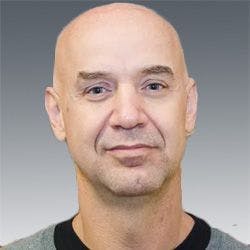Beyond Hyperscale: Quantum Frederick's Vision for Sustainable Data Center Development
Post-World War II peace brought about prosperity, and the era of modern mass consumerism was born. Good times fueled growing appetites for material goods, and the Eastalco factory in Frederick, Maryland fed almost 10% of the world’s demand for aluminum. 195,000 tons/year of aluminum really mattered while, at the time, the accompanying 3,600,00 tons of carbon emissions seemed immaterial. The nature of industry seemed bigger than nature herself and while the data center industry may have coined the word “Hyperscale,” it hardly invented the act of hyper-scaling industrial growth.
By the early 2000s hyperscale and mass consumption of data shifted from what was just physical material goods to now digital demands. Fast times fueled heavy appetites for instant information via smart phones. And, as hyper (aka chaotic) data center growth turned exponential over the past decades, innovators began thinking of a master plan to solve the growing logistical and environmental challenges that were occurring in multiple, disparate directions. A primary goal of the plan was to transform the data center industry’s perceived conflict with nature and make industry part of nature. It is this motivation that drove the creation of Quantum Loophole, the first ever master-planned data center community – with a focus on creating a holistic and symbiotic approach to development by bringing together ecology, economies of scale and an ecosystem approach to data center development.
Today, on the same ground where Eastalco Aluminum once stood, Quantum Frederick stands to enable the next generation of a market that will serve more than 10% of the world’s internet. Instead of physical materials, at Quantum Frederick it’s largely virtual commodities that matter and empower our digital screens: gigawatts of energy, petabytes of data and ZERO carbon emissions. The community brings together the innovations of both humans and nature’s own technology to make data centers part of the natural environment, while embracing the power of ecology to work for its natural cleansing capabilities.
Creating The First Carbon Neutral Industrial Zone
With carbon emission-fueled climate change presenting the largest negative aspect of industry’s conflict with nature, carbon neutrality became Quantum Frederick’s most important cause. We have taken a two-pronged approach: Firstly, enabling the reduction of carbon emissions all together, and secondly removing all carbon emitted onsite operationally. As a result, we have designed the world’s first carbon neutral industrial zone, laying the foundation not just for smarter and better global data center development, but for any and all industrial size developments to leverage as well.
In partnership with University of Maryland Cetner for Environmental Sciences, the Governor Moore administration and Frederick County, Quantum Frederick is the world’s first green industrial community purposefully designed to enable net negative onsite operational carbon emission via planting over 1 million trees across 600 acres of an onsite nature reserve. This certified and registered carbon sink is designed to capture and store (over more than 100 years) more carbon than is emitted onsite. Additional features of the nature reserve include:
- Strategically selected and placed native species trees that provide sound attenuation, air filtration and community view-scape protection.
- High absorption plant-based “batteries” designed to absorb increasing surface water runoff driven by climate change.
- Ground cover that provides water filtration of any past remaining industrial or agricultural pollution.
- Soil remediation and long-term sustainability using mycelium fungi.
- A nature corridor connecting the reserve and enabling the safe passage of animal life.
- Deployment of nature-based pollinators (including bees, butterflies, and ruby-throated hummingbirds) to help sustain nature and agriculture.
- Stream restoration of Tuscarora Creek.
To supplement short term carbon emission gaps and to help account for other forms of carbon emissions, such as those generated during construction, Quantum Frederick has partnered with Nori to develop approaches that enable carbon emission avoidance or capture through collaboration with neighboring local Maryland farmers. Quantum Frederick has begun working with Trey Hill Farms, enabling the avoidance / removal of 3,000 tons of Maryland’s agricultural emissions.
In efforts to avoid carbon emissions all together, Quantum Frederick co-locates data centers with multi-pathed, redundant primary transmission lines to enable three times less utility downtime (and therefore less diesel backup runtime) versus legacy sites. The community’s backup fuel supply chain is also architected to enable the use of HVO renewable fuel, which reduces net carbon emissions by more than 80%.
Quantum Frederick’s nature reserve efforts are intended to set a global example that helps inspire others in the steps that make industry a part of nature by using the innovations that nature has already provided us. Next on the horizon for Quantum Frederick is enabling the autonomous orchestration of 100% renewable energy supply and cloud computing demand, in-order to deliver Critical Power as a Service, while improving overall grid stability for both community and industry. Stay tuned…
About the Author

Scott Noteboom
Scott Noteboom is Chief Technology Officer at Quantum Loophole. Scott believes that the only place for a rebel is a revolution. At Quantum Loophole, Scott serves on the front lines of the Decarbonization Revolution. His mission is to help enable next-generation data centers that autonomously orchestrate supply and demand between clean energy and cloud computing resources. His intention: Better, faster, cleaner and cheaper– pick four. A former mercenary in the Cloud Revolution, Scott served as VP of Operations at Yahoo! and Head of Global Infrastructure at Apple. He led deployment and operation of two of the world’s largest clouds, driving innovation in the data center and distributed compute space. In backing the Clean Energy Revolution, data centers are breaking away from their dirty energy-hog past. Scott served as CEO and Founder of Litbit, and earlier grew a small underground bulletin board (bbs) into a sizable Internet Service Provider (ISP.) Scott likes to brag about creating one of the world’s first Voice over IP (VOIP) companies, learning that being first isn’t always worth bragging about. A wise person once said that “rebels die.” Scott’s been working to prove that wrong ever since.
Technology rebel. Challenging the status quo. Green and clean advocate. Transformation revolutionary. CTO of Quantum Loophole.



